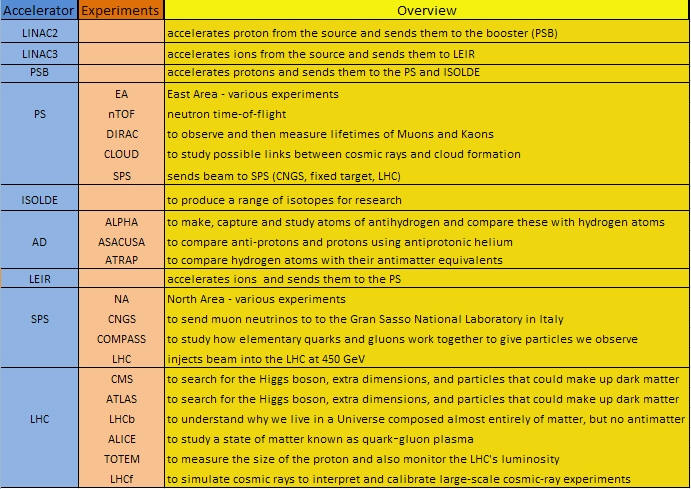
|
The short story of protons from bottle to collision It takes a number of steps to get protons up to speed for collisions in the LHC 1) The collisions at the LHC begin life in a bottle of hydrogen. Protons are extracted from hydrogen. 2) The protrons are accellerated first by the LINAC2 accellator to 50MeV 3) Then are boosted by the PSB to 1.4GeV 4) Next they head to the PS and get accellerated to 25Gev 5) Then on to the SPS where they really pick up speed, 450 GeV 6) Finally they reach the LHC and go in opposite directions where they will reach 7000GeV ( 7TeV) in head on collisions in the experiments, ALICE, ALTAS,CMS or LHCb
|
